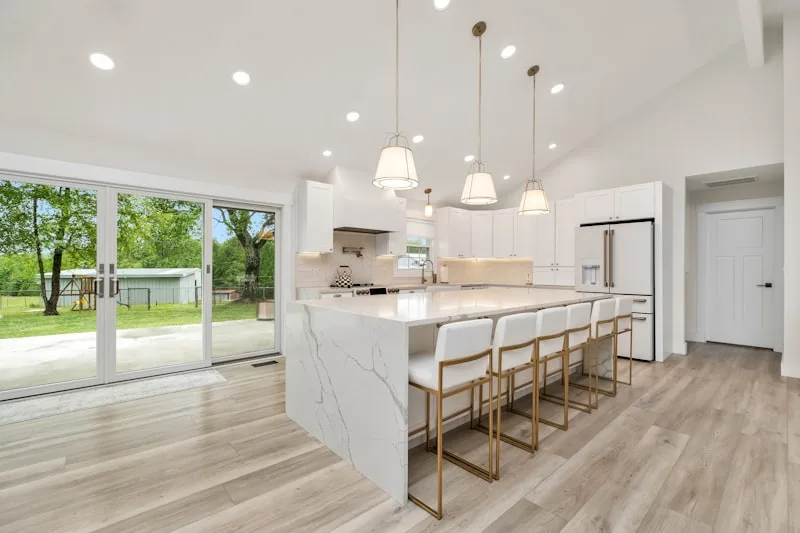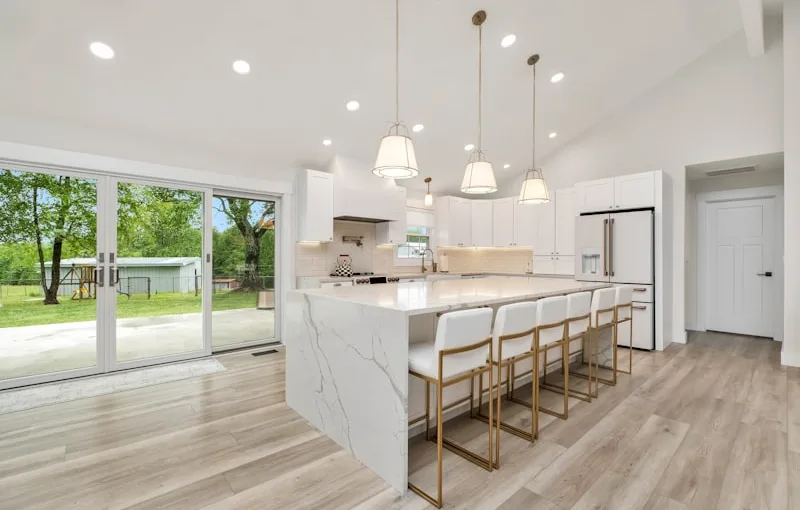First things first, gather your supplies. You’ll need a matching stain or paint, a clean cloth, a small brush or sponge, and some fine-grit sandpaper. Think of this as your toolkit for a mini kitchen makeover! Now, before you dive in, it’s crucial to clean the area around the stain. A little soap and water will do the trick, ensuring you’re working on a fresh canvas.
Once it’s dry, gently sand the stained area. This is like prepping a canvas before painting; it helps the new stain adhere better. Just be careful not to overdo it—you’re not trying to strip the whole cabinet down to bare wood!
Now comes the fun part: applying the stain. Dip your brush or sponge into the stain and apply it in the direction of the wood grain. It’s like giving your cabinets a little spa treatment! If the color isn’t quite right, don’t panic. You can layer it on until you achieve the perfect match. Just remember to let each layer dry before adding more.
After you’re satisfied with the color, give it a final touch with a clean cloth to blend everything in. It’s like polishing a diamond; you want it to shine! And voilà! Your kitchen cabinets are looking fresh and fabulous again. Who knew a little touch-up could make such a big difference?
Revive Your Kitchen: Expert Tips for Touching Up Stains on Cabinets
First off, let’s talk about the power of a good cleaning. Sometimes, all it takes is a little elbow grease. Grab a gentle cleaner and a soft cloth, and start wiping down those cabinets. You’d be amazed at how much grime can accumulate over time. Think of it like giving your cabinets a refreshing spa day!
Now, if you’re dealing with stubborn stains, don’t panic. A mixture of baking soda and water can work wonders. It’s like a magic potion for your cabinets! Just make a paste, apply it to the stain, and let it sit for a few minutes before wiping it away. It’s a simple trick that can make a world of difference.
But what if the stain is still hanging around? That’s where touch-up paint comes into play. If you’ve got a little leftover paint from when you first painted your cabinets, you’re in luck! Use a small brush to carefully dab the paint onto the stained area. It’s like giving your cabinets a little facelift. Just be sure to blend it in well so it doesn’t look like a patch job.
From Drab to Fab: A Step-by-Step Guide to Stain Touch-Ups on Kitchen Cabinets
First things first, gather your supplies. You’ll need a good quality wood stain that matches your cabinets, a clean cloth, a brush, and some sandpaper. Think of this as your artist’s toolkit. Now, before you dive in, give your cabinets a good clean. Dust and grease can be like that pesky fly at a picnic—totally unwelcome!
Once they’re clean, it’s time to assess the damage. Are there scratches or faded spots? Grab your sandpaper and gently buff those areas. It’s like giving your cabinets a mini spa day—smooth and rejuvenated! After sanding, wipe away any dust with a cloth.
Now, let’s get to the fun part: staining! Dip your brush into the stain and apply it in the direction of the wood grain. It’s like painting a masterpiece; you want to see those beautiful strokes. If you want a deeper color, don’t hesitate to apply a second coat after the first one dries.
Finally, let your cabinets dry completely. This is the moment of truth! Step back and admire your handiwork. Just like that, you’ve turned your kitchen from drab to fab, all with a little bit of stain and a lot of love. Who knew a simple touch-up could make such a difference? Your kitchen is now ready to shine!
Kitchen Cabinet Rescue: How to Perfectly Touch Up Stains Like a Pro
First off, assess the damage. Is it a minor scratch or a stubborn stain? Knowing what you’re dealing with is half the battle. For light scratches, a simple wood marker can work wonders. Just like a magic wand, these little tools can blend right into the wood, making those scratches disappear faster than your favorite snack at a party!
Now, if you’re facing a more significant stain, grab some fine-grit sandpaper. Think of it as a gentle exfoliation for your cabinets. Lightly sand the area around the stain, being careful not to go too deep. It’s like giving your cabinets a mini spa day! Once you’ve smoothed it out, wipe away the dust with a damp cloth.
Next up, it’s time for the touch-up paint. Choose a color that matches your cabinets—this is where the magic happens! Apply it with a small brush, feathering the edges to blend it seamlessly. It’s like painting a masterpiece, but instead of a canvas, you’re reviving your kitchen!
Stain Be Gone: Simple Techniques to Refresh Your Kitchen Cabinets
First off, think of your cabinets as the face of your kitchen. Just like you wouldn’t go out with a smudge on your cheek, you don’t want your cabinets to show signs of neglect. Start with a gentle cleaning solution—mix equal parts vinegar and water in a spray bottle. This dynamic duo is like a superhero team for your cabinets, cutting through grease without harsh chemicals. Spray it on, let it sit for a minute, and then wipe it away with a microfiber cloth. Voila! Instant freshness.
Now, if you’re dealing with stubborn stains, don’t fret. Baking soda is your best friend here. Create a paste with baking soda and water, apply it to the stain, and let it sit for about 10 minutes. It’s like giving your cabinets a mini spa treatment! Afterward, scrub gently with a soft sponge, and watch those stains disappear like magic.
For a final touch, consider using a wood polish or conditioner if your cabinets are wooden. It’s like giving them a drink of water after a long, hot day. Just a little bit goes a long way in restoring that beautiful shine and protecting the wood from future wear and tear.

So, are you ready to transform your kitchen cabinets? With these simple techniques, you’ll be amazed at how a little effort can lead to a big impact!
Frequently Asked Questions
How Do I Identify the Right Stain for My Cabinets?
To identify the right stain for your cabinets, consider the wood type, desired color, and finish. Test samples on a small area to see how the stain interacts with the wood grain. Match the stain with your overall decor and lighting to ensure it complements your space. Always check for compatibility with existing finishes.
How Can I Prepare the Surface Before Staining?
To prepare a surface for staining, start by cleaning it thoroughly to remove dirt, grease, and old finishes. Sand the surface to create a smooth texture and ensure better stain absorption. If necessary, fill any cracks or holes with wood filler and allow it to dry completely. Finally, wipe the surface with a damp cloth to remove dust and debris before applying the stain.
What Techniques Should I Use for Even Application?
To achieve an even application, start by preparing your skin with a suitable primer. Use tools like brushes, sponges, or your fingers, depending on the product type. Apply in thin layers, building coverage gradually. Blend well, especially around edges, and consider using a setting spray to lock in the look. Regularly clean your tools to avoid streaks and ensure a smooth finish.
What Tools Do I Need for Touching Up Cabinet Stains?
To effectively touch up cabinet stains, you will need a few essential tools: a clean cloth for surface preparation, a fine-grit sandpaper for smoothing the area, a matching stain or touch-up marker for color application, a small brush or applicator for precise application, and a clear finish or sealant to protect the repaired area. Having these tools on hand will ensure a seamless and professional-looking touch-up.
How Do I Ensure a Seamless Finish After Touching Up?
To achieve a seamless finish after touching up, start by ensuring the surface is clean and free of dust. Use the same paint type and color as the original application. Apply thin layers, feathering the edges to blend with the surrounding area. Allow each layer to dry completely before adding more. Finally, consider using a fine-grit sandpaper to smooth any rough spots and a matching finish to blend the sheen.
